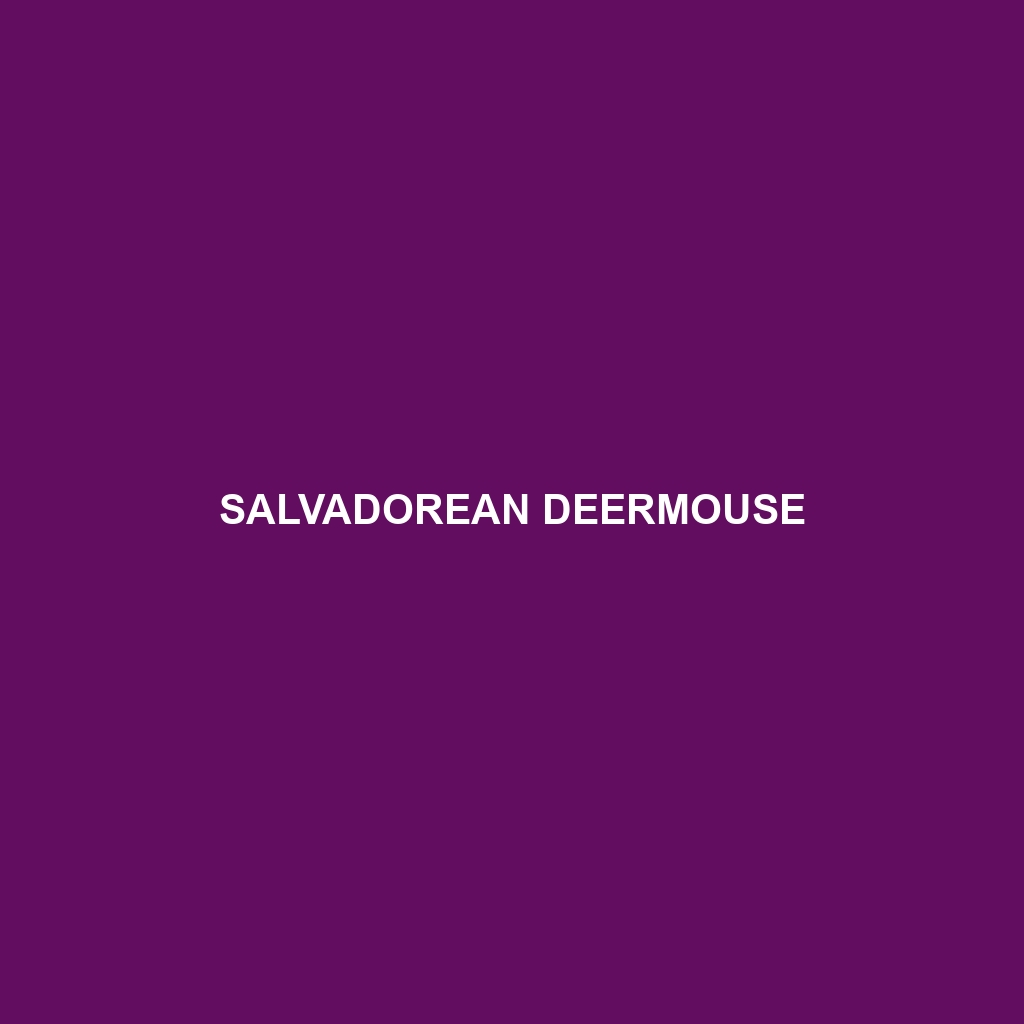Species Description: Salvadorean Deermouse
Common Name: Salvadorean Deermouse
Scientific Name: Peromyscus fraterculus
Habitat: The Salvadorean Deermouse is primarily found in the tropical and subtropical regions of Central America, particularly in El Salvador and parts of Honduras. This species thrives in various environments, including deciduous forests, shrublands, and agricultural areas. They often inhabit areas with dense undergrowth that provide both shelter and food sources, making them adaptable to changing landscapes.
Physical Characteristics: Salvadorean Deermice are medium-sized rodents, typically measuring around 10 to 12 inches in total length, including their tails. Their fur is generally soft and dense, exhibiting a coloration that ranges from light brown to gray on the upper body, with lighter shades underneath. Notable features include large eyes and ears, which aid in their nocturnal activities. Their tails are long and often bicolored, which can help in identification.
Behavior: The Salvadorean Deermouse is primarily nocturnal, exhibiting peak activity during the twilight hours. These mice are known for their agile movements, often climbing trees and shrubs to escape predators or search for food. They are social creatures that tend to live in small family groups, communicating through various vocalizations and scent markings. This adaptability to their environment makes them a subject of interest in studies related to behavioral ecology.
Diet: The diet of the Salvadorean Deermouse mainly consists of seeds, fruits, and insects, making them omnivorous foragers. They are known for their opportunistic feeding habits, taking advantage of seasonal food availability. Salvadorean Deermice play a crucial role in seed dispersal, aiding in the propagation of various plant species within their habitat.
Reproduction: Salvadorean Deermice generally breed throughout the year, with peak breeding seasons occurring in warmer months. Female deermice can produce multiple litters annually, with each litter typically consisting of 3 to 7 young. The young are altricial, meaning they are born hairless and helpless; they depend on their mother for warmth and nourishment until they are weaned at about three weeks.
Conservation Status: The Salvadorean Deermouse is currently classified as ‘Least Concern’ by the International Union for Conservation of Nature (IUCN). Nonetheless, habitat loss due to deforestation and urbanization poses a potential threat to their populations, making continued monitoring important for their conservation status.
Interesting Facts: An intriguing aspect of the Salvadorean Deermouse is its ability to adapt to urban environments. This adaptability allows them to thrive in modified landscapes, where they often exploit human food sources. Additionally, they possess excellent climbing abilities and are known to create nests in trees, enhancing their survival in diverse habitats.
Role in Ecosystem: The Salvadorean Deermouse plays an essential role in its ecosystem by serving as both prey and predator. They help regulate insect populations through their diet while being a food source for various predators, including birds of prey and snakes. Furthermore, their activities contribute to seed dispersal, promoting plant diversity and ecological balance in their habitats.

